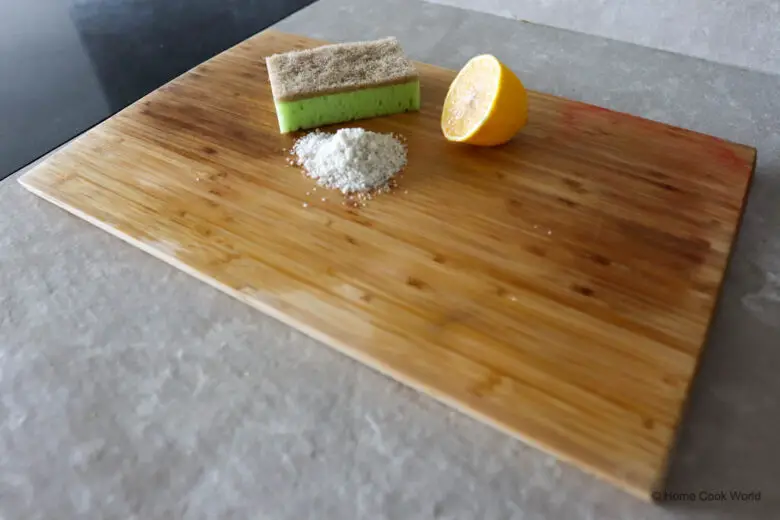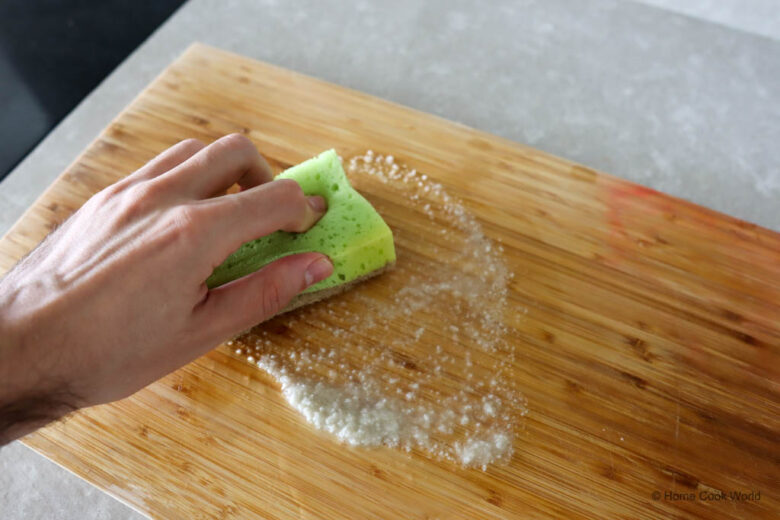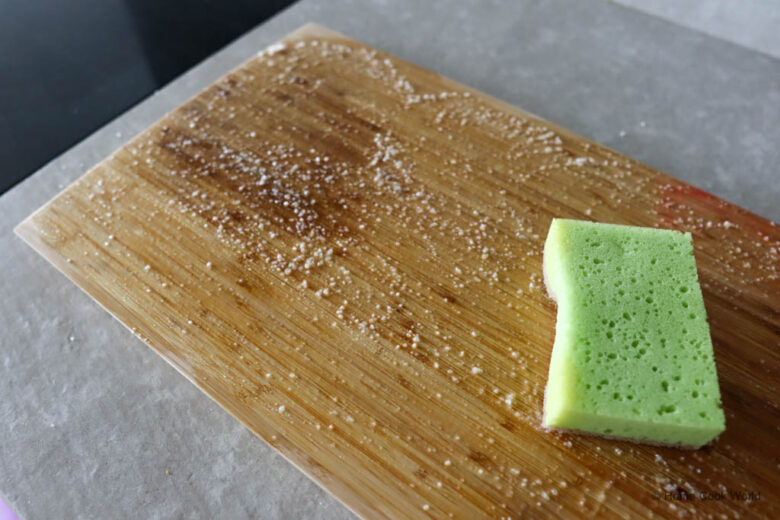A wood cutting board is a perfect surface for cutting, slicing, and chopping meats, cheeses, herbs, vegetables, and fruit. Unfortunately, it can also get real smelly, real quick.
The porous surface of a wood cutting board—whether the board itself is made from maple, walnut, cherry, beech, teak, or bamboo—can all too easily soak up juices and absorb odors from meats, alliums, and fish.
On top of that, the side of the cutting board facing your countertop can get populated by bacteria, which secrete a gnarly odor, and fungi, which leave mold spots, if exposed to moisture for a long enough time.
Your wood cutting board can catch odors from foods like garlic and onions unless you wash it shortly after use. In some cases, the board can get smelly from developing mildew after improper drying, typically on the bottom side that’s facing the countertop.
I know because I’ve been using a pair of IKEA’s APTITLIG cutting boards for years—one for red meat, poultry, and seafood and one for cheeses and produce—and I’ve made every mistake an owner can make.
Fortunately, there are a few steps that you can take to clean and deodorize a cutting board. If you do them now and then and care for your wood cutting board properly, there’s no reason why it shouldn’t last for decades.
How Often to Clean a Wood Cutting Board
Clean your wood cutting board after every use to keep it odor-free and avoid the buildup of bacteria or fungi on the surface.
In some cases, like slicing a loaf of freshly-baked bread, there’s no need to wash your cutting board. All you need to do is brush away the breadcrumbs, and you’re done.
After light uses, like slicing cherry tomatoes and peeling cucumbers for a summer salad, wipe your cutting board’s surface down with a wet towel, and it will look spick and span in no time again.
Heavy uses involving meat juices or strong odors, such as slicing bloody beef, deboning chicken thighs, and mincing garlic and/or anchovy fillets, require you to give your cutting board a good hand-clean and soap-down.
How to Clean a Wood Cutting Board
Always wash your cutting board by hand, with soapy water. Never put it in the dishwasher or submerge it in the sink; the wood will soak up a lot of water, which will deform or crack it beyond salvation.
Wet your scrub sponge, give it a squirt of dish soap, and squeeze it a couple of times to get it to foam. Tilt your cutting board into the sink and gently scrub the surface for at least 20 seconds on each side, letting the soap work its magic.
You can use a mild dish soap such as Frosch Natural, which is what I do, or a specialized wood soap such as Howard Clean-A-Finish, which a woodworker friend of mine recommends for butcher’s blocks and higher-end boards.
Rinse the board under lukewarm running water and pat it thoroughly dry using a dishrag or a few paper towels (you’re going to need more than one paper towel to dry a wooden board, so keep that roll handy).
Leave the board to air-dry overnight by placing it in the dish rack or propping it upright, preferably by a window.
How to Deodorize a Wood Cutting Board
If you’ve been using your wood cutting board for a while now and it’s starting to get stinky, giving it a good soap down may not be enough.
This happened to me just recently. Moisture, you see, had built up between the backside of my cutting board and the stone countertop. I only noticed this after a couple of days when the situation had already gotten smelly.
To deodorize my cutting board, I made a cleaning paste of 1 tablespoon salt (kosher salt or coarse sea salt provide the best texture) and the juice of 1/2 a lemon, which I scrubbed onto the board for 2 minutes with a soft sponge, putting a good amount of elbow grease into it.
Then, I left the mixture to dry on my cutting board completely. After an hour or so, I used my chef’s knife to scrape off the dried salt and cleaned the cutting board by hand, with soapy water following the technique above.
If you don’t have lemons on hand, distilled white vinegar with an acidity level of 5% is a good substitute for lemon juice.
How to Disinfect a Wood Cutting Board

After cleaning your cutting board with soapy water, you can sanitize it with a solution of 1 tablespoon of unscented chlorine bleach per 1 gallon of water (this is the ratio recommended by the USDA).
Spray the surface with the solution (bleach irritates the skin, so don’t forget to use gloves) and let it stand for 10 minutes. Once the time has passed, rinse the board under lukewarm running water, pat it completely dry, and hang it to air-dry for at least 12 hours.
As an alternative to bleach, you can use 3% hydrogen peroxide.
While bleach and hydrogen peroxide are highly effective against bacteria on your cutting board, they can also cause discoloration of the wood. So apply with caution, especially on dark-colored boards.
If Your Cutting Board Stays Stinky
If you tried every step on my list yet your cutting board stayed stinky or spotted with mildew, then it’s probably time to get rid of it and get a new one.
Speak to a woodworker if you want to salvage a butcher’s block or thick cutting board that’s developed mildew; they can sand it off for you. You could also do it yourself at home, as long as you ensure that no mold is left (otherwise, it will grow back as quickly as you got rid of it).
Readers experiencing consistent issues with mildew may want to consider getting a cutting board with legs, such as , which won’t retain moisture at the back, even when your countertops are wet, thanks to the legs that elevate it.



